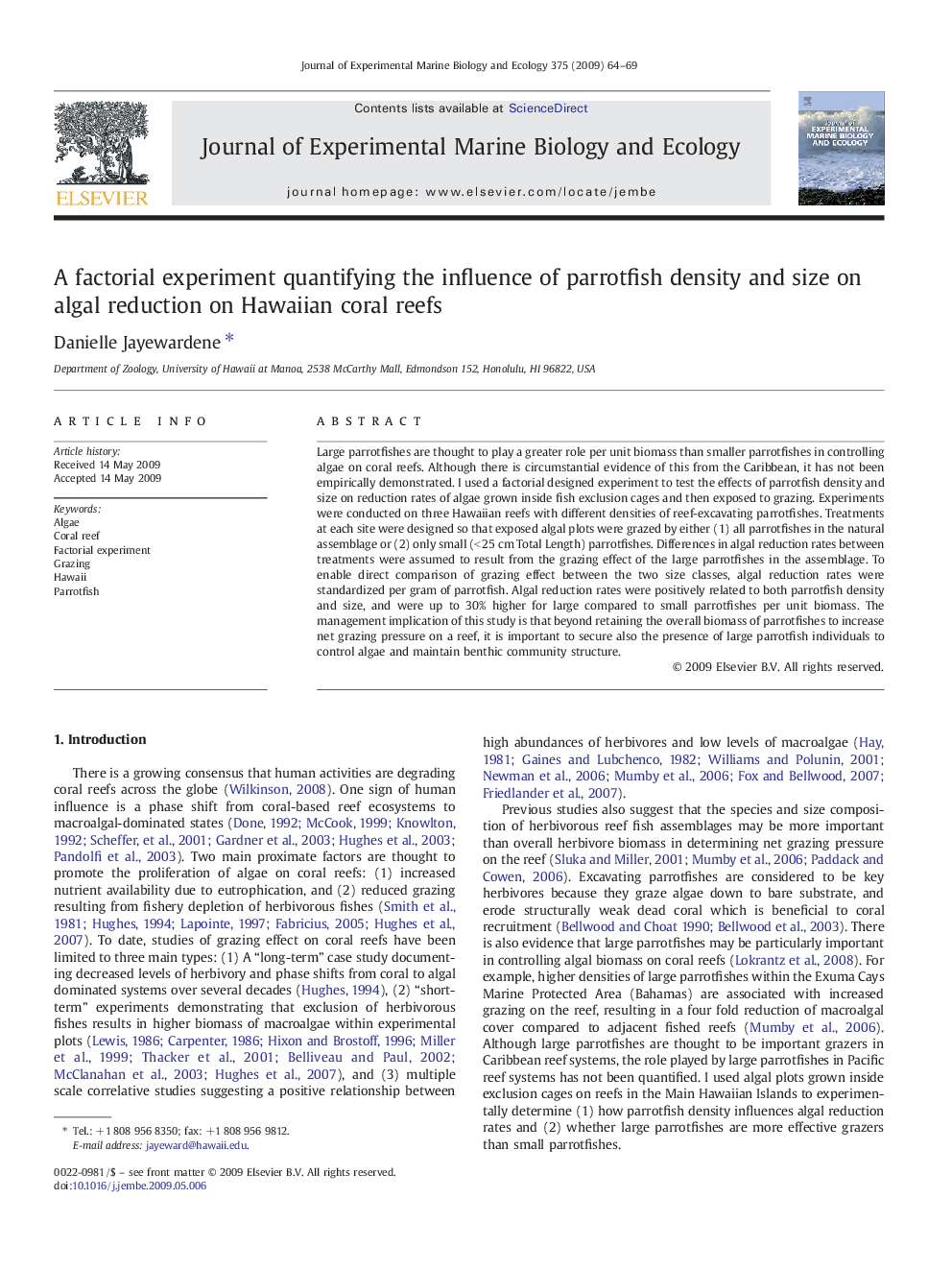| Article ID | Journal | Published Year | Pages | File Type |
|---|---|---|---|---|
| 4396930 | Journal of Experimental Marine Biology and Ecology | 2009 | 6 Pages |
Large parrotfishes are thought to play a greater role per unit biomass than smaller parrotfishes in controlling algae on coral reefs. Although there is circumstantial evidence of this from the Caribbean, it has not been empirically demonstrated. I used a factorial designed experiment to test the effects of parrotfish density and size on reduction rates of algae grown inside fish exclusion cages and then exposed to grazing. Experiments were conducted on three Hawaiian reefs with different densities of reef-excavating parrotfishes. Treatments at each site were designed so that exposed algal plots were grazed by either (1) all parrotfishes in the natural assemblage or (2) only small (< 25 cm Total Length) parrotfishes. Differences in algal reduction rates between treatments were assumed to result from the grazing effect of the large parrotfishes in the assemblage. To enable direct comparison of grazing effect between the two size classes, algal reduction rates were standardized per gram of parrotfish. Algal reduction rates were positively related to both parrotfish density and size, and were up to 30% higher for large compared to small parrotfishes per unit biomass. The management implication of this study is that beyond retaining the overall biomass of parrotfishes to increase net grazing pressure on a reef, it is important to secure also the presence of large parrotfish individuals to control algae and maintain benthic community structure.
